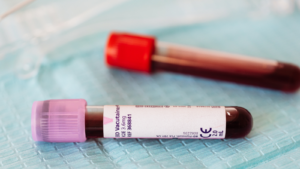What are Platelet Disorders?
Platelets, also called thrombocytes, are a type of blood cell that plays a vital role in clotting. They are essential for preventing excessive bleeding following injuries. However, several conditions can disrupt their normal function or quantity. Such conditions are collectively known as platelet disorders. This article delves into the intricacies of platelet disorders, including their types, causes, symptoms, diagnosis, and treatment.
 Understanding Platelets
Understanding Platelets
Before diving into the disorders, it’s crucial to understand the role of platelets. They are small, disc-shaped cells produced in the bone marrow and released into the bloodstream. Upon sensing a blood vessel injury, platelets rush to the site and form a plug, thereby preventing blood loss. They also release chemical signals to activate the clotting cascade, further stabilizing the clot.
Types of Platelet Disorders
Platelet disorders can broadly be categorized into two types:
- Quantitative Disorders: These involve a change in the number of platelets.
- Thrombocytopenia: Decreased platelet count.
- Thrombocytosis: Increased platelet count.
- Qualitative Disorders: These involve normal platelet count but dysfunctional platelets.
Causes of Platelet Disorders
- Thrombocytopenia:
- Bone marrow diseases like leukemia or aplastic anemia.
- Chemotherapy or radiation therapy.
- Viral infections, such as HIV.
- Medications like heparin.
- Autoimmune conditions.
- Alcoholism.
- Thrombocytosis:
- Secondary to iron-deficiency anemia.
- Inflammatory conditions like rheumatoid arthritis.
- After splenectomy (removal of the spleen).
- Bone marrow disorders like myeloproliferative neoplasms.
- Qualitative Platelet Disorders:
- Genetic mutations causing conditions like Bernard-Soulier syndrome or Glanzmann thrombasthenia.
- Medications like aspirin.
- Uremia in chronic kidney disease.
Symptoms
The presentation depends on whether there is a reduction, increase, or dysfunction of platelets.
- Thrombocytopenia:
- Easy bruising.
- Petechiae (tiny purple or red spots).
- Prolonged bleeding from cuts.
- Heavy menstrual periods.
- Thrombocytosis:
- Often asymptomatic.
- Potential for thrombosis leading to strokes, heart attacks, or pulmonary embolisms.
- Qualitative Platelet Disorders:
- Similar to thrombocytopenia with easy bruising and bleeding tendencies.
Diagnosis
A detailed history and physical examination, coupled with laboratory tests, can diagnose platelet disorders.
- Complete Blood Count (CBC): Assesses the platelet count.
- Peripheral Blood Smear: Evaluates platelet morphology.
- Bone Marrow Biopsy: Especially in unexplained thrombocytopenia.
- Platelet Function Tests: For suspected qualitative disorders.
Treatment
Treatment varies based on the specific disorder:
- Thrombocytopenia:
- Treat the underlying cause (e.g., stopping a medication).
- Platelet transfusions for severe cases.
- Immune thrombocytopenia may require steroids, IVIG, or splenectomy.
- Thrombocytosis:
- Low-dose aspirin to prevent clotting events.
- Phlebotomy or medications like hydroxyurea in some cases.
- Qualitative Platelet Disorders:
- Platelet transfusions for severe bleeding.
- Avoiding medications that further impair platelet function.
Platelet disorders, whether due to a decrease, increase, or dysfunction of platelets, can have significant clinical implications. A timely diagnosis and appropriate treatment are crucial to manage these conditions and prevent potential complications.
